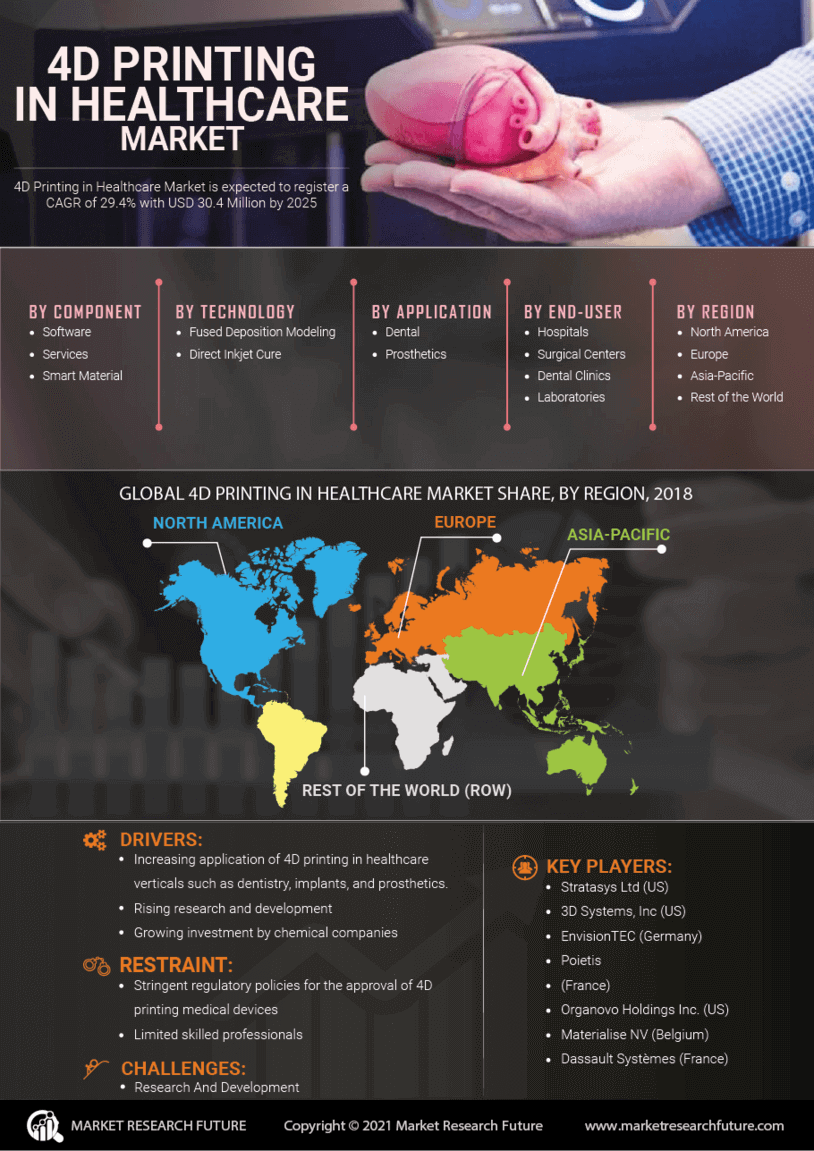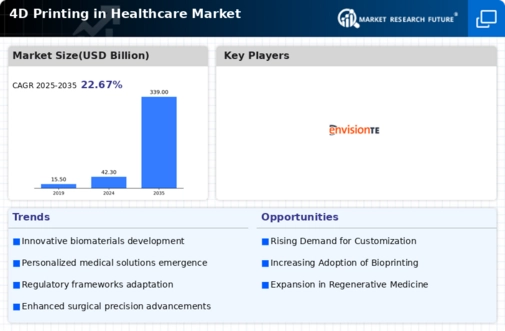Advancements in Biomaterials
The 4D Printing in Healthcare Market is witnessing a surge in the development of advanced biomaterials that can respond to environmental stimuli. These materials, which include shape-memory polymers and hydrogels, are designed to adapt their properties based on temperature, pH, or other factors. This adaptability allows for the creation of personalized medical devices and implants that can better meet patient needs. For instance, the market for biomaterials is projected to reach USD 150 billion by 2025, indicating a robust growth trajectory. The integration of these materials into 4D printing processes enhances the potential for innovative healthcare solutions, thereby driving the market forward.
Regulatory Support and Frameworks
The 4D Printing in Healthcare Market benefits from increasing regulatory support aimed at fostering innovation. Regulatory bodies are beginning to establish frameworks that facilitate the approval and integration of 4D printed medical devices into clinical practice. This support is crucial, as it provides manufacturers with clearer pathways to market entry, thereby encouraging investment in research and development. As regulations evolve to accommodate new technologies, the market is expected to expand, with projections indicating a compound annual growth rate of 25% over the next five years. This regulatory environment is likely to enhance the credibility and acceptance of 4D printing in healthcare.
Increased Demand for Customization
Customization is becoming a pivotal driver in the 4D Printing in Healthcare Market. As healthcare providers seek tailored solutions for individual patients, the ability to produce customized medical devices and implants through 4D printing is gaining traction. This demand is reflected in the growing market for personalized medicine, which is expected to reach USD 2.5 trillion by 2025. The capacity to create patient-specific solutions not only improves treatment outcomes but also enhances patient satisfaction. Consequently, the emphasis on customization is likely to propel the adoption of 4D printing technologies in healthcare settings.
Growing Focus on Regenerative Medicine
The increasing emphasis on regenerative medicine is a key driver for the 4D Printing in Healthcare Market. As the field seeks to develop therapies that can repair or replace damaged tissues and organs, 4D printing offers promising solutions through its ability to create dynamic and responsive structures. The regenerative medicine market is anticipated to reach USD 100 billion by 2025, highlighting the potential for 4D printing technologies to play a crucial role in this sector. By enabling the fabrication of scaffolds that can adapt to biological environments, 4D printing is likely to enhance the effectiveness of regenerative therapies, thereby driving market growth.
Technological Innovations in 3D Printing
Technological advancements in 3D printing are significantly influencing the 4D Printing in Healthcare Market. Innovations such as multi-material printing and improved software for design and simulation are enhancing the capabilities of 4D printing. These technologies enable the production of complex structures that can change shape or function over time, which is particularly beneficial for applications in tissue engineering and regenerative medicine. The market for 3D printing in healthcare is projected to reach USD 6 billion by 2025, suggesting a strong foundation for the growth of 4D printing technologies. As these innovations continue to evolve, they are likely to drive further adoption of 4D printing in healthcare.

















Leave a Comment